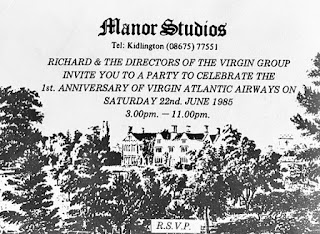and as Jo in Man About the House (ITV 1973-76)
I.
Even though the seventies British sitcom Man About the House remains one of my favourite shows, there are several things about it that I find problematic; not least of all that Sally Thomsett's character, Jo, is outrageously underdeveloped by the writers, Brian Cooke and Johnnie Mortimer.
Indeed, unlike the other lead characters, she's not even given a surname!
Whilst I understand and appreciate that the show essentially concerns the quasi-romantic relationship between Robin and Chrissy (played by Richard O'Sullivan and Paula Wilcox), in my view Cooke and Mortimer missed a trick in not doing more with Jo who had a unique charm of her own and much untapped comic potential beyond the stereotype of the good-looking dumb blonde.
If I'd been writing the show, I would've hooked Thomsett's character up with Robin's mate Larry, a cheeky Jack the Lad (played by Doug Fisher) who rents the attic room above the flat. I would have also much reduced the role of the landlord, George Roper, and his wife Mildred (played by Brian Murphy and Yootha Joyce).
Obviously, this would have changed the show's structure, narrative, and comedic dynamic, but would have done so in a positive and interesting manner; for me, George and Mildred as a bickering married couple - he the hen-pecked husband and she the long-suffering sex-starved wife - are simply too rooted in cliché and old-fashioned humour [1].
If Man About the House had been the story of two young couples - Robin and Chrissy and Jo and Larry - and what it was like to be a twenty-something in the mid-70s, I think it would now feel less dated than it does today. And, who knows, it's possible that the audience may even have come to love Jo and Larry more than George and Mildred (or even Robin and Chrissy).
II.
Sally, of course, was already held in great public affection due to her role as Phyllis Waterbury in The Railway Children (dir. Lionell Jeffries, 1970).
Amusingly, Thomsett was cast as an eleven year old girl despite being twenty at the time of filming and contractually
forbidden not to give the game away during production by smoking, drinking, driving, or being seen in public with a boyfriend on her arm. Even many members of the film crew were unaware of her true age and would often arrive on set with sweets for her.
A year afterwards, Thomsett appeared onscreen opposite Dustin Hoffman and Susan George in Sam Peckinpah's controversial and violent thriller Straw Dogs (1971), playing the role of flirty village girl Janice Hedden (who isn't brutally raped, like George's character, Amy, but still meets a grisly fate; inadvertently strangled by a retarded paedophile).
It wasn't either of these roles, however, that brought Thomsett to the attention of Cooke and Mortimer when looking to cast the character of Jo in Man About the House. Rather, they had spotted her in a 30 second TV ad for Bovril (1972), playing the character of Jill, who is stood up by her boyfriend and returns home, cold and upset, where her mum makes her a nice hot drink using a spoonful of the nation's favourite beef extract [2].
The ad's humorous punchline - He's got big ears anyway - is repeated by Thomsett (as Jo) in the first episode of series two of Man About the House, much to the amusement of the live studio audience [3].
III.
After Man About the House ended (in April 1976), Thomsett continued to act in this and that and to appear in TV ads - including one for Crunchie bars in 1979 - but, in terms of her professional career, I think we can say her golden days were behind her and it's in the roles of Janice, Jill, and Jo that I'll always remember her with great fondness.
and as Jill in a TV ad for Bovril (1972)
Notes
[1] In spite of this - indeed, probably because of this - the Ropers were hugely popular with the Great British Public and the spin-off series George & Mildred (ITV 1976-1979), written by Cooke and Mortimer, ran for 38 episodes over five series (just one episode less than Man About the House).
Murphy and Joyce also starred in a George and Mildred feature film, directed by Peter Frazer Jones (1980), though this was not well-received, either commercially or critically, as everyone finally tired of this type of lame and lazy comedy.
[2] For non-British readers who might not know what I'm talking about, Bovril is is a brand of beef extract which has been enjoyed in the UK since 1886 - particularly by football fans standing on the terraces in mid-winter conditions. Three-and-a-half million jars are still sold in the UK every year. As well as being enjoyed as a hot drink, Bovril can also be spread as a paste on toast, or added to soups and stews for a rich beefy flavour. Vegetarians might prefer its yeasty plant based equivalent, Marmite.
The Bovril ad starring Sally Thomsett can be watched on YouTube by clicking here.
[3] Man About the House [S2/E1]: 'While the Cat's Away', directed by Peter Frazer-Jones, written by Johnnie Mortimer and Brian Cooke (Jan. 1974). This episode - co-starring Ian Lavender (as Mark) and Jenny Hanley (as Liz) - can be viewed on YouTube by clicking here. Go to 15: 16 for the big ears line, which arguably gets Thomsett her biggest laugh in the entire series.
Interestingly, Lavender's character is supposed to be an actor and, at one point he tells Chrissy - who wants to know if the dress she's wearing gives her a sexy look, a bit like Susan George - that he auditioned for a crowd scene in Straw Dogs (but didn't hit it off with Peckinpah). Surely this can't be coincidental, and is rather another example of the writers teasing Thomsett about her acting history. Go to 12:25-44.















